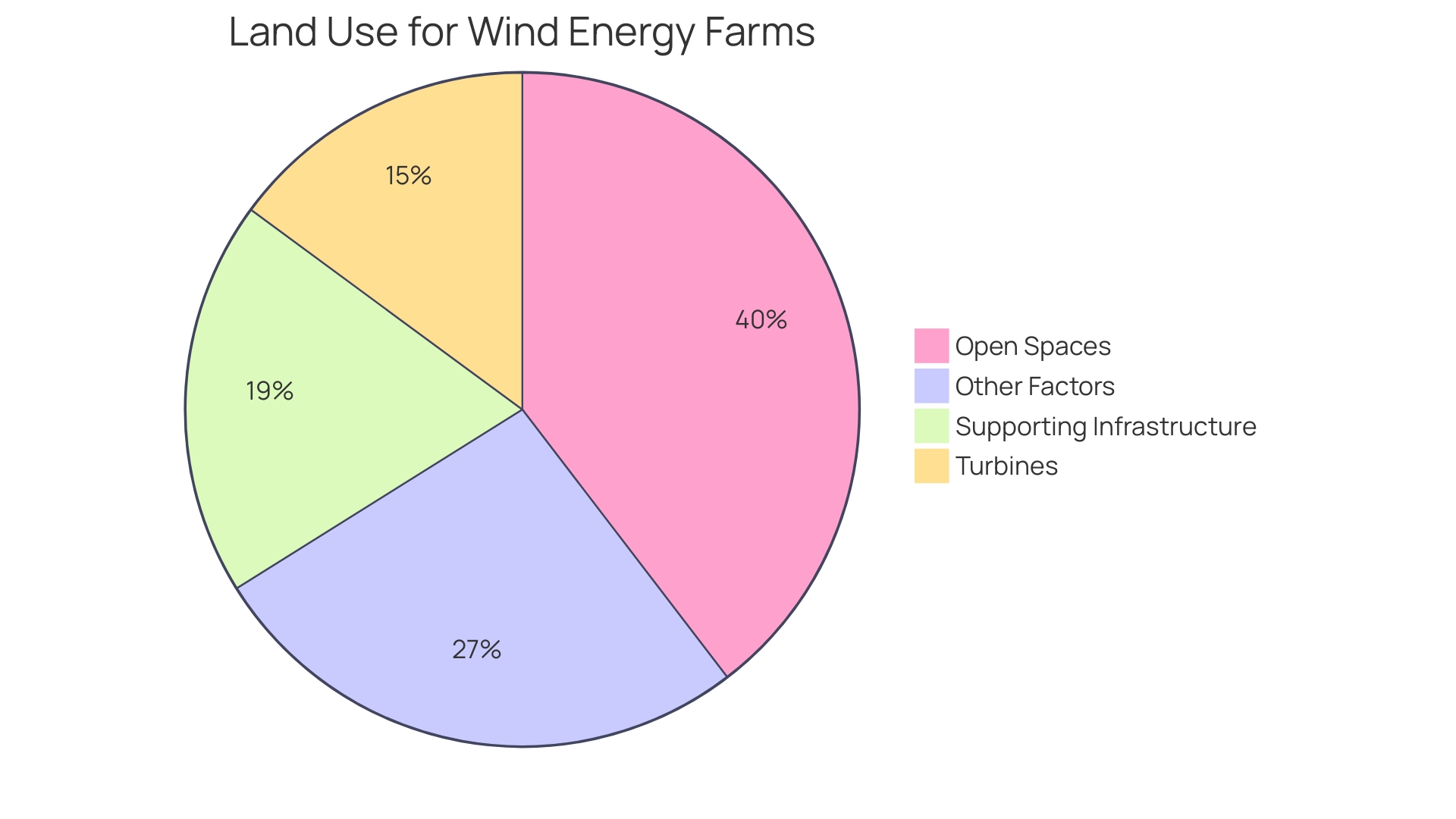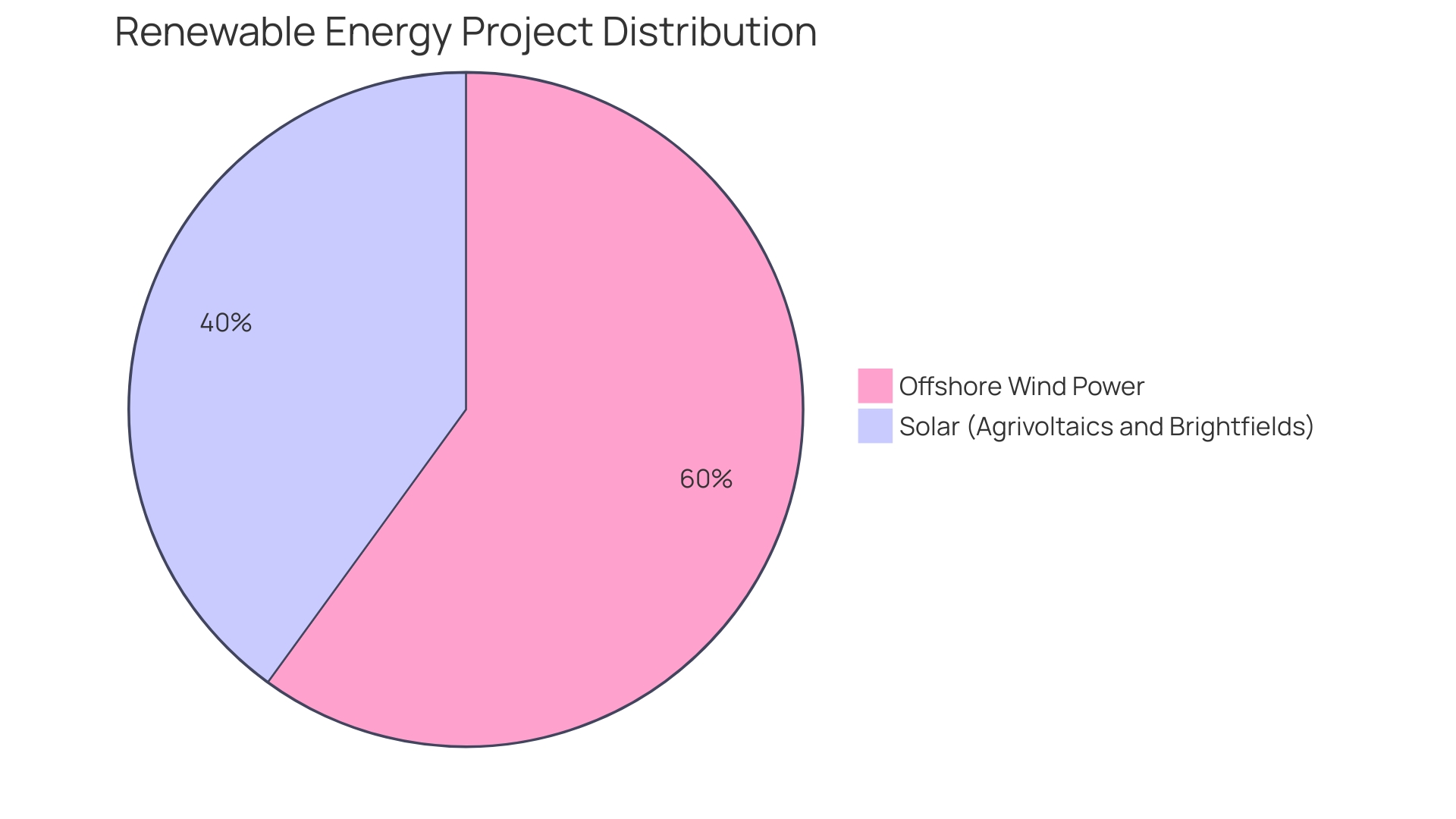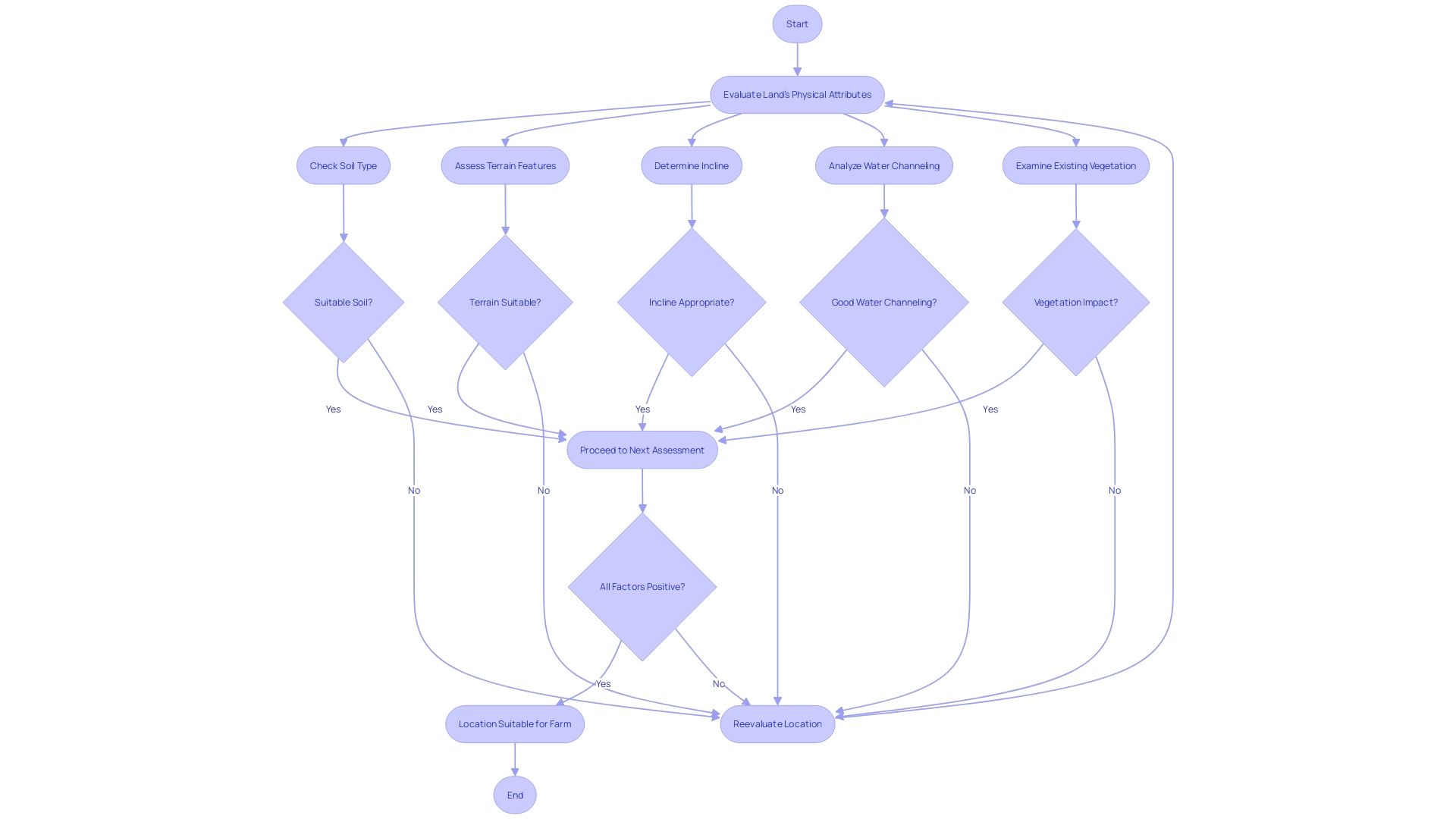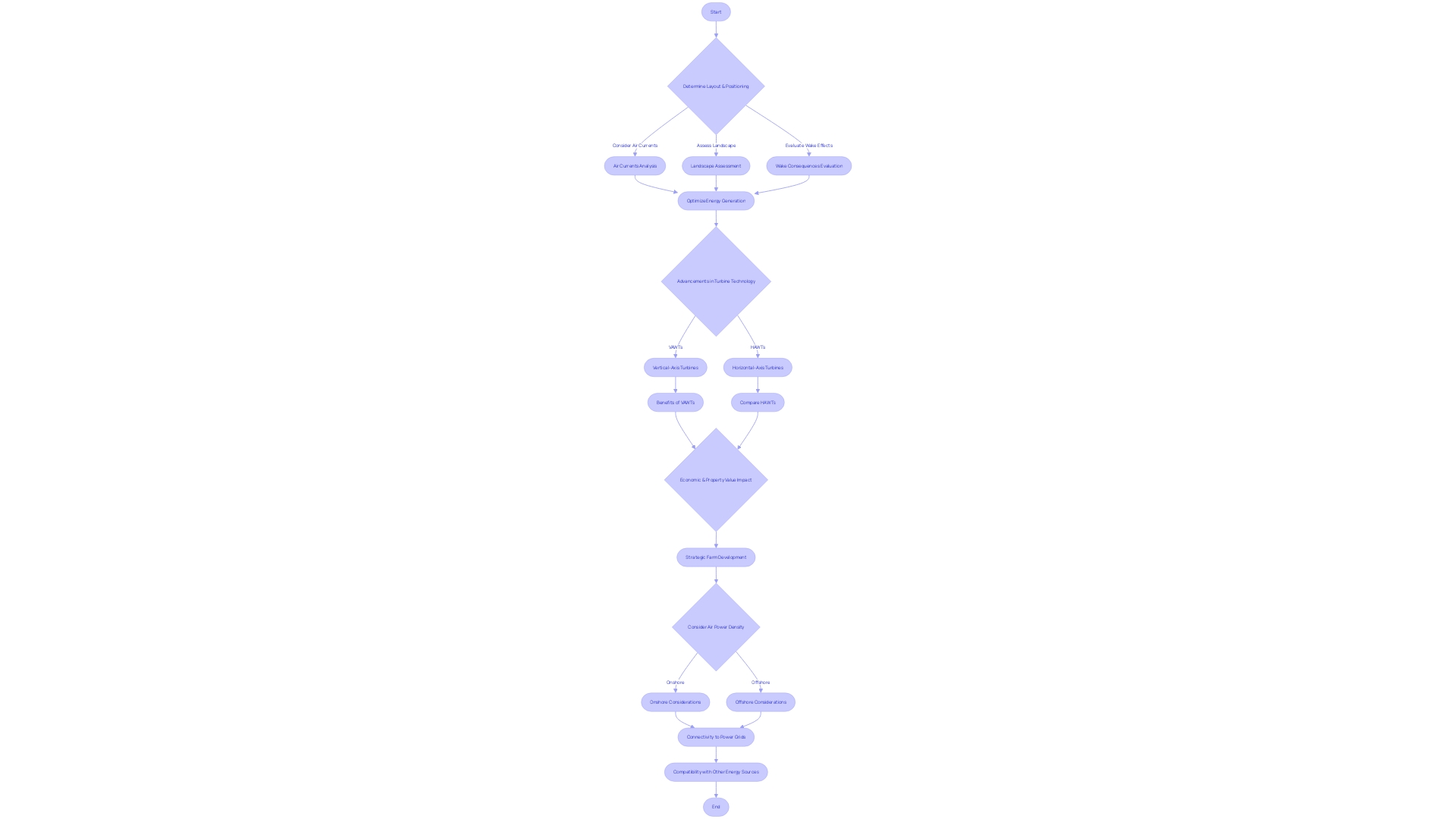Introduction
Wind energy is a rapidly growing sector that requires careful consideration of various factors to optimize land use for wind farms. The spatial demands of wind energy projects are influenced by factors such as open areas free of obstructions, the density of wind power, and the fair distribution of benefits within communities. Additionally, legislative frameworks and social cohesion play crucial roles in offshore wind development.
Understanding the land requirements per megawatt of capacity and the distinction between the direct impact area and the total wind farm area are essential for sustainable wind energy projects. Factors like soil characteristics, wind turbine spacing and layout, land ownership, and fragmentation issues also need to be taken into account. The article explores the challenges and considerations involved in wind energy development and highlights the importance of responsible resource utilization and collaboration between stakeholders.
The land use efficiency of wind energy projects is compared to traditional energy sources, emphasizing the leaner footprint and environmental benefits of wind farms. The article concludes by emphasizing the need for a transition to renewable energy sources to meet climate goals and the importance of policy innovation and technological advancements in achieving a cleaner and more sustainable energy future.
Factors Influencing Land Use for Wind Farms
The establishment of wind energy farms is a intricate undertaking, requiring a substantial amount of space not only for the turbines themselves but also for the essential supporting infrastructure. The spatial demands of renewable power initiatives are influenced by a variety of factors, which can lead to wide-ranging land-use requirements. For example, the requirement for unobstructed open spaces is crucial to prevent turbulence that could reduce power generation and decrease the lifespan of the turbine.
Moreover, the concentration of air current potential is relatively minimal in comparison to alternative power sources, requiring more extensive areas of territory or oceanic space to produce substantial quantities of power. For example, a study by Nøland et al. in 2022 underscored that the share of global land use attributed to harnessing wind power could be around 3% to satisfy a substantial portion of the demand for electricity, highlighting its status as a secondary rather than a primary technology due to land constraints and the necessity of backup systems.
The discussion about harnessing air power is not confined to technical and spatial factors. Social factors play an equally important role, as communities impacted by turbine farm developments often express concerns regarding the fair distribution of benefits and the maintenance of social cohesion. A heartfelt consideration on this matter comes from Sharon Trayer, a member of the nearby community, who highlights the necessity for the State to intervene in conflicts arising from energy projects harnessing the power of the air currents, particularly when substantial expansions in energy derived from the natural motion of the air are needed to achieve sustainable goals.
In the case of offshore air development, as seen in Bulgaria, legislative frameworks play a pivotal role. The country's draft offshore law, which is currently awaiting a second hearing in Parliament, has sparked debate among various stakeholders, including transmission system operators and environmental groups. The introduction of Contracts-for-Difference (CFDs) and the question of whether to create dedicated regulations for offshore farms or incorporate them into existing legislation are central to these discussions.
The complexities of harnessing the power of the breeze involve various dimensions, including the technical considerations of installing infrastructure and material necessities, as well as the interpersonal relationships between developers, communities, and government entities. As nations like Bulgaria and communities around the world navigate these challenges, the stories from Kuna and the insights from Sharon Trayer serve as a reminder of the delicate balance needed to advance the use of air currents while respecting local ways of life and ecological imperatives.

Land Requirements Per Megawatt of Capacity
Comprehending the spatial footprint of renewable projects is crucial, and for wind power, this is frequently measured as the quantity of area needed per megawatt (MW) of capacity. However, this is just the tip of the iceberg when considering the integration of sustainable power into our landscapes. Innovative approaches like 'agrivoltaics' - the simultaneous use of space for both solar power generation and agriculture - and 'brightfields', which involve the installation of solar panels on former mining sites, are transforming the way we think about and utilize space for solar projects. These methods not only optimize land use but also contribute to ecological and agricultural benefits, promoting healthier soils and conservation efforts.
In the realm of air power, advancements are equally as dynamic. For instance, the declaration by China's Mingyang Smart Energy about a massive 22-megawatt offshore wind power system highlights the increasing magnitude of wind power ventures. The size of the windmills is a crucial element as the energy collected is directly related to the area covered by the windmill. As a result, with the enlargement of turbines, the intricacies of their transportation and installation also increase, leading to expensive delays and decreased income if not handled effectively.
In the midst of this advancement, the National Renewable Energy Labs (NREL) has revealed the material necessities for turbines that harness the power of air, including steel, concrete, and foundational materials. This thorough examination provides a more distinct image of the resources required for these structures, which is crucial given the sporadic nature of wind and the continuous material investment for what is essentially part-time power generation.
The recent agreement shaped by various stakeholders, including the technologies subgroup, proposes best practices for siting solar projects responsibly and sustainably. This initiative aims to explore further into six key areas for improvement: community engagement, risk assessment, renewable technologies, information tools, tribal relations, and policy solutions. This collective endeavor represents a change from the past development patterns that have frequently disregarded the effects on local communities and the environment. By emphasizing cooperation and technological progress, the objective is to promote extensive solar growth that aligns with our environment and productive areas, establishing a fresh benchmark for sustainable renewable expansion.

Direct Impact Area vs. Total Wind Farm Area
Understanding land requirements for energy projects involves recognizing the distinction between the direct impact area and the overall site area. The direct impact area encompasses the space physically occupied by turbines and associated infrastructure, such as substations and maintenance facilities. In contrast, the overall site area extends beyond, including buffer zones, access roads, and space for auxiliary services, which are crucial for operation and maintenance as well as complying with regulatory setbacks. This demarcation is crucial to precisely evaluate the environmental impact and seamlessly integrate the turbine farm harmoniously with the surrounding environment. To guarantee that renewable power projects are viable and effective, a refreshed examination of material usage, including steel and concrete, is crucial. This approach allows for a grounded discussion on clean energy development, considering the evolving nature of technology and the importance of responsible resource utilization. It is also crucial to consider the various challenges that come with the intermittent nature of renewable energy, which requires careful planning and material considerations to ensure reliability and minimize environmental impact.
Quality of Land and Soil Considerations
Choosing a suitable location for a farm that generates electricity from air currents requires thoughtful evaluation of the land's physical attributes, as specific types of soil and features of the terrain can greatly impact the project's feasibility. Soils like clay or peat, for example, might lack the necessary stability to support a generator for harnessing natural air currents, potentially leading to structural complications. Furthermore, the incline of the land, its innate ability to channel water, and the kind of plants existing can all impact not only the possibility of building but also the continuous effectiveness and upkeep of the facility that harnesses the power of the air. These factors must be meticulously evaluated to ensure the selected site can sustainably host the energy generators for their expected operational lifespan, typically 20-25 years, with options for repowering or decommissioning at the end of this period. The complex equilibrium between the technical specifications of renewable power projects and the ecological and societal aspects in motion illustrates the significance of a systematic method to choose the location, considering the lasting influence on both the neighboring society and the ecosystem.

Spacing and Layout of Wind Turbines
The layout and positioning of wind power generators are crucial elements in maximizing land utilization for projects based on air currents. Unlike solar panels that can be installed on existing structures like rooftops, air generators require significant space due to their height and the need to minimize turbulence caused by obstacles. This distance guarantees effective energy generation and extends the longevity of the windmills. The difficulty resides not just in the physical area but also in comprehending the dynamics of air currents, landscape, and the interaction among energy converters referred to as wake consequences.
Advancements in air current generator technology are aiming to tackle these spatial challenges. Vertical-axis turbines (VAWTs), for instance, have a smaller footprint compared to traditional horizontal-axis turbines (HAWTs) and are less harmful to wildlife due to their rotation pattern. Furthermore, emerging residential air current solutions aim to make breeze energy more accessible for home use, though the market for such applications is still developing.
The influence of wind farms on local economies and property values has been a subject of research. A comprehensive analysis found that while property prices near turbines might dip post-announcement and during construction, they typically recover within a few years of operation. This emphasizes the significance of strategic planning in farm development to reduce immediate adverse impacts while taking advantage of the long-term advantages of sustainable power.
Moreover, the density of air power, which varies significantly depending on onshore or offshore deployment, affects the quantity of space required. It's crucial to take into account the accessible area, connectivity to power grids, and compatibility with other energy sources to ensure the utilization of wind power can be accomplished effectively as a component of the wider energy mix.

Land Ownership and Fragmentation Issues
Obtaining the essential territory for energy projects driven by air current is a complex challenge, often due to the issues of property ownership and fragmentation. Developers must navigate the complex process of consolidating sufficient adjacent areas, which is further complicated by the involvement of multiple landowners and the division of property into fragmented parcels. This situation requires a strategic approach to collaboration and negotiation with landowners to address potential conflicts and facilitate the acquisition of land for farm development.
Recent developments in the renewable energy sector illustrate these challenges. In France, for example, legal battles have ensued over the placement of turbines, with courts ruling that turbines caused distress to local residents and negatively impacted landscapes. In one significant instance, a turbine farm was instructed to halt operations and return the area to its initial state. Despite such setbacks, the country remains committed to expanding its wind power capacity, with President Macron announcing plans for 50 new offshore wind farms as part of France's transition to renewable power sources.
The conversation concerning the utilization of territory for sustainable power source ventures has likewise been noticeable in the United States. In Missouri, communities have gathered to voice concerns over solar farm projects, seeking to protect their interests and preserve social cohesion. Sharon Trayer, a local resident, highlights the significance of starting development projects with community engagement to promote trust and support for sustainable initiatives.
Additionally, the International Renewable Energy Agency (IRENA) emphasizes the growing global capability for renewable power production, emphasizing the significance of tackling acquisition challenges to fulfill increasing demands. Experts in the field, such as Romany Webb from the Sabin Center for Climate Change Law, emphasize the importance of developing new infrastructure for renewable power throughout the country.
Considering these factors, it is evident that the procurement of sites for renewable energy projects is not just a transactional issue, but a complex procedure that necessitates an understanding of local dynamics, strong legal structures, and a dedication to sustainable growth. The combined endeavors of governments, corporations, and communities are vital in attaining the extensive investment in clean technologies required for a more environmentally friendly future.

Comparative Land Use Across Different Energy Sources
The utilization effectiveness of breeze power projects shows a noticeable difference compared to conventional power sources. In contrast to power plants that rely on fossil fuels, wind farms have a smaller physical footprint, which is advantageous for both environmental conservation and space utilization. For example, projects harnessing the power of air do not involve extracting resources that require high pressure storage systems or produce high-density waste. In contrast to hydrogen, which requires storage at pressures of 10,000 pounds per square inch because of its low power density, turbines utilize natural airflow without such demanding storage requirements, thus alleviating strain on the ground.
This efficiency is highlighted by recent developments that aim to streamline the deployment of renewable energy sources like air and solar. Innovators and environmental groups have reached an agreement to simplify the construction of large-scale solar farms, which traditionally face hurdles relating to land use and ecological preservation. This accord, facilitated by the Stanford Woods Institute for the Environment and other key institutions, reflects a broader acknowledgment of the importance of land-efficient renewable projects that respect biodiversity and community aesthetics.
The environmental and economic impacts of turbine farms have been quantified in comprehensive analyses. A study examining home sales near turbine farms from 2005 to 2020 revealed initial price dips post-announcement and during construction phases. However, these values rebounded to pre-announcement levels within a few years of operation, indicating a temporal rather than permanent effect on local property markets. Moreover, the broader societal benefits of renewables, such as job creation and tax revenue, contribute to local economies in meaningful ways.
Despite misconceptions and disinformation campaigns that link wind farms to wildlife harm and environmental degradation, evidence-based assessments have debunked these claims. Wind turbines stand as a sustainable power source, with independent fact-checking organizations affirming their compatibility with environmental health.
In the global context, fossil fuels continue to dominate consumption across sectors. Nevertheless, the swift progress of sustainable power technologies, supported by governmental strategies and cost reductions for solar and wind electricity, is indicating a shift. For example, President Biden's support of a large-scale offshore wind farm project off the Virginia coast represents a notable push towards expanding renewable power infrastructure, even as economic challenges prompt some developers to reassess their plans.
The push for renewables is not merely about setting records; it's about a fundamental shift in power paradigms. To achieve climate objectives, significantly increasing renewable sources is crucial. Policy innovation plays a crucial role, as seen in the burgeoning green hydrogen market, where sustainable production is being actively pursued. Ultimately, the success of renewable energy, including wind projects, lies in their ability to offer a cleaner, more space-efficient alternative to traditional power sources, aligning with both environmental stewardship and modern energy demands.
Conclusion
In conclusion, wind energy projects require careful consideration of factors such as open areas, wind power density, fair distribution of benefits, and legislative frameworks. Understanding land requirements and addressing challenges like soil characteristics, spacing, land ownership, and fragmentation are crucial for sustainable development.
Wind farms have a leaner footprint compared to traditional energy sources, benefiting the environment. The transition to renewable energy is essential for meeting climate goals, and policy innovation and technological advancements are key drivers.
Acquiring land for wind projects involves collaboration and negotiation, with governments, corporations, and communities working together. Wind farms offer environmental benefits and societal advantages, while being compatible with environmental health.
The rapid advancement of renewable energy technologies signifies a shift towards clean energy sources. This transition is vital for achieving a sustainable energy future and aligning with modern energy demands. Wind energy plays a significant role in this transition.




